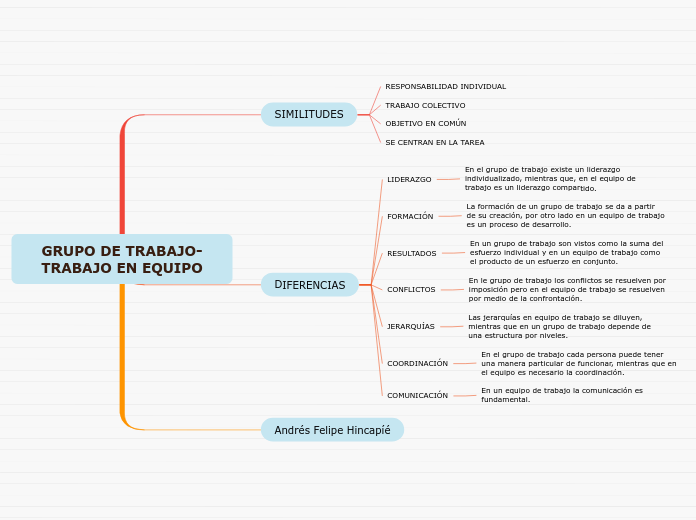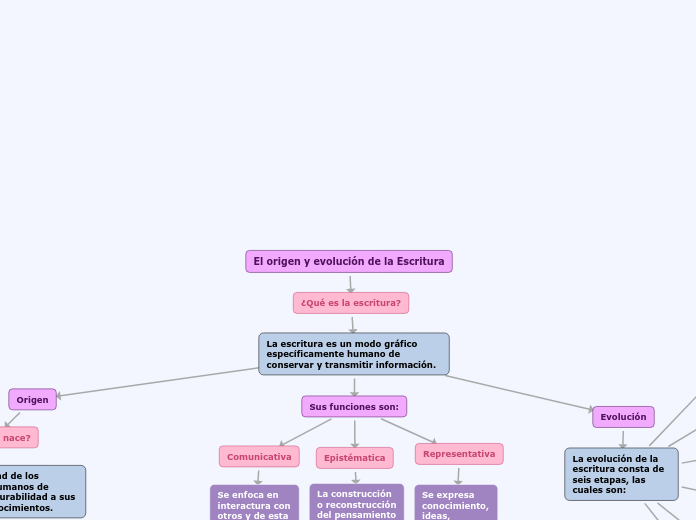GRUPO DE TRABAJO-TRABAJO EN EQUIPO
To name your story, you have to think about the overall message and what you want your audience to understand from the story. Also, make it relevant and easy to remember.
Andrés Felipe Hincapíé
DIFERENCIAS
The middle of the story is where you add layers of complications that will lead to the end. Reveal more about the character's journey. Did their personality go through changes? How did they overcome the challenges? And as you build up the story’s central conflict, make it more personal to that character. Also, from the middle act, you have to lead into the final act.
COMUNICACIÓN
En un equipo de trabajo la comunicación es fundamental.
COORDINACIÓN
En el grupo de trabajo cada persona puede tener una manera particular de funcionar, mientras que en el equipo es necesario la coordinación.
JERARQUÍAS
Las jerarquías en equipo de trabajo se diluyen, mientras que en un grupo de trabajo depende de una estructura por niveles.
CONFLICTOS
En le grupo de trabajo los conflictos se resuelven por imposición pero en el equipo de trabajo se resuelven por medio de la confrontación.
RESULTADOS
There wouldn't be any tension and excitement in your story if there weren't any obstacles in your character's way.
En un grupo de trabajo son vistos como la suma del esfuerzo individual y en un equipo de trabajo como el producto de un esfuerzo en conjunto.
FORMACIÓN
Your character(s) need(s) motivation in order to solve the challenge(s).
La formación de un grupo de trabajo se da a partir de su creación, por otro lado en un equipo de trabajo es un proceso de desarrollo.
Secondary characters also might have motivs beacuse of which they may cross path with main character or which might trigger them to help the main character.
LIDERAZGO
Each story has a main character and that character usually needs to solve a problem or challenge. The character's challenge is the one that creates tension throughout the story.
En el grupo de trabajo existe un liderazgo individualizado, mientras que, en el equipo de trabajo es un liderazgo compartido.
SIMILITUDES
In the beginning of the story (or the exposition), you will need to introduce the setting and characters. You might also want to introduce the main conflict. This part of the story is important because it gives the reader necessary background information and maybe even a first insight into a character’s personality.
SE CENTRAN EN LA TAREA
OBJETIVO EN COMÚN
TRABAJO COLECTIVO
The setting (time & place) of a story can change throughout the plot.
RESPONSABILIDAD INDIVIDUAL
Characters are essential to a good story. Usually, the protagonist(s) is/are the most affected by the plot. Introduce a character by focusing on their actions, interests, and occupation, as the physical appearance doesn't make a difference in most cases.










